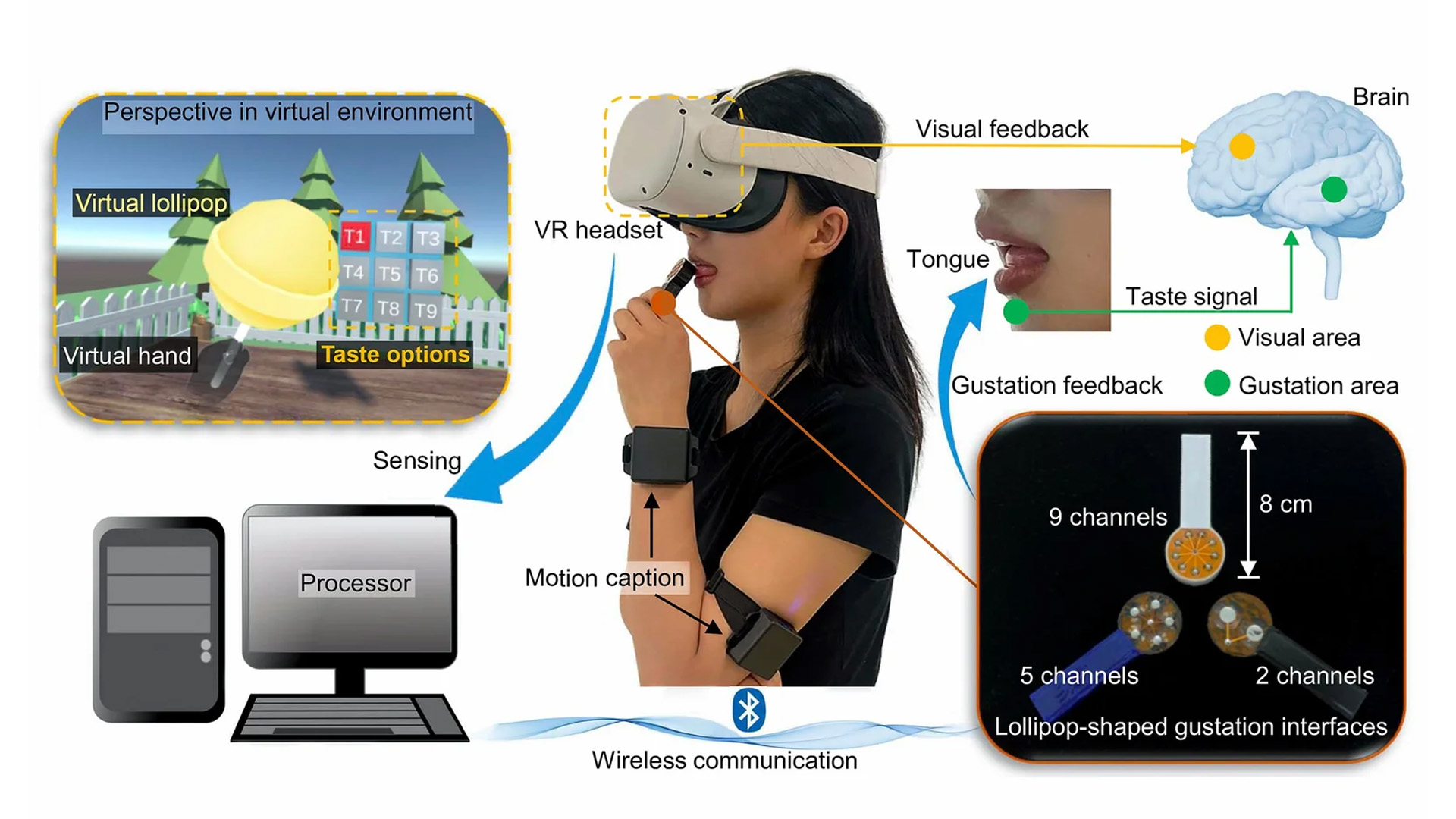Today’s VR technology primarily engages sight and hearing, with touch incorporated to a lesser degree through haptic controllers or vests. In contrast, the simulation of smell and taste remains largely unexplored and the focus of ongoing research.
A group of researchers has unveiled a device the size and shape of a lollipop that produces nine different flavors: sugar, salt, citric acid, cherry, passion fruit, green tea, milk, durian, and grapefruit. By combining this with a visual illusion in virtual reality, the researchers hope to trick the brain successfully into thinking it is tasting the real thing.
The flavors are produced by chemicals embedded in a pocket of agarose gel, writes IEEE Spectrum. When a voltage is applied to the gel, the chemicals are transported to the surface in a liquid that then mixes with saliva on the tongue, just like a real lollipop. If the voltage is increased, the taste gets stronger.
 2·1 month ago
2·1 month ago


